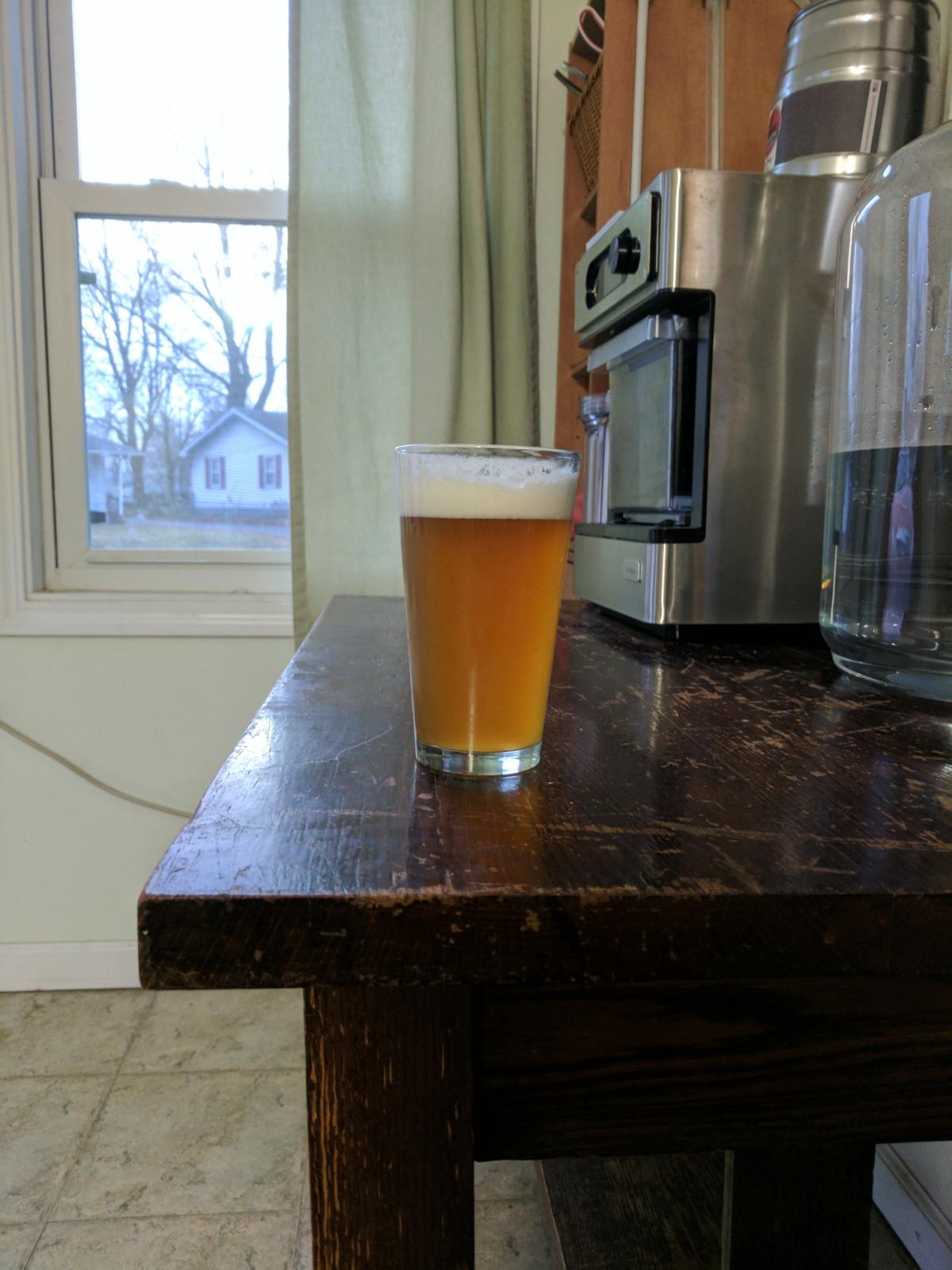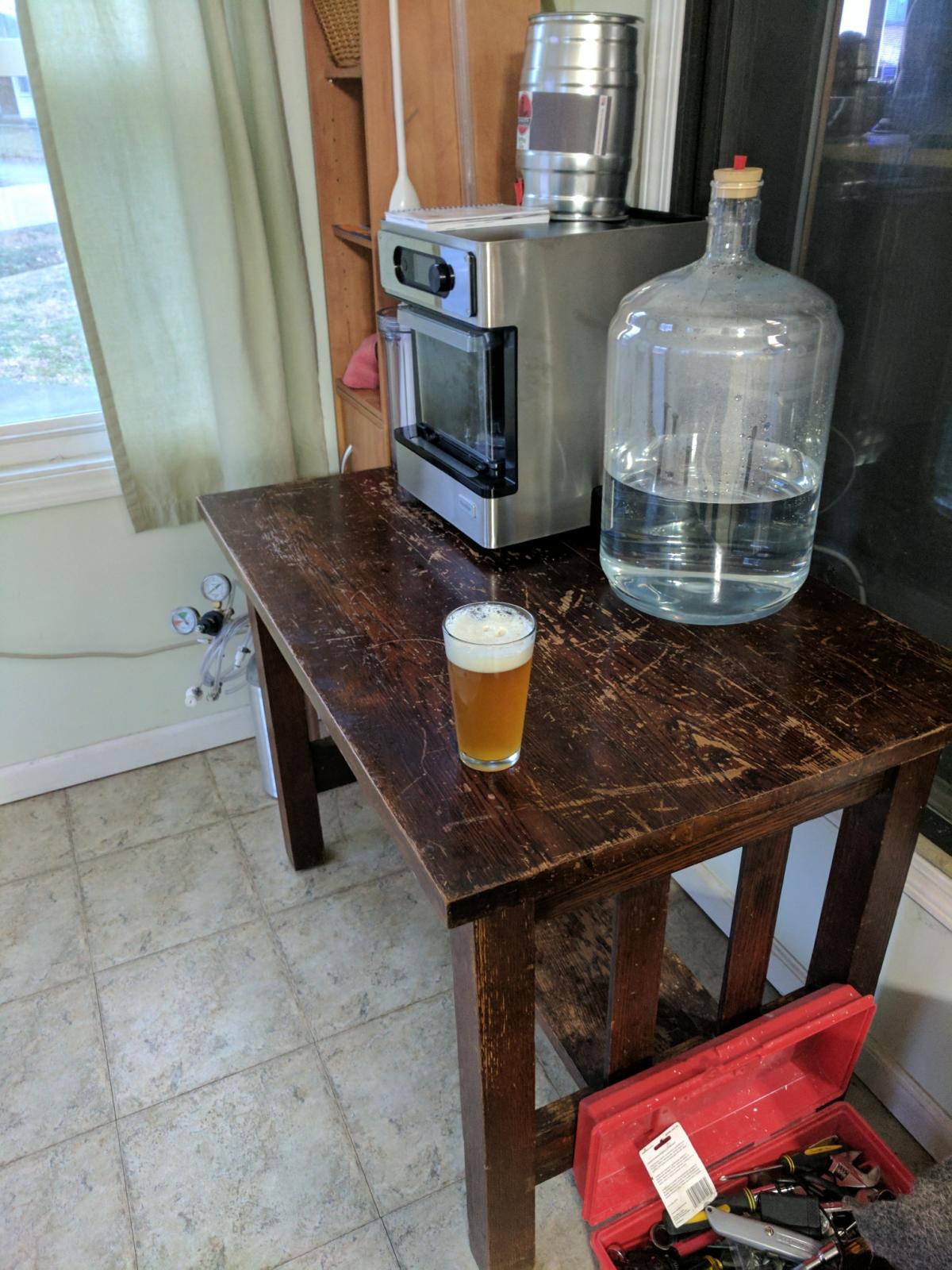Here is a post Denny Conn made in the Facebook group, he gave me permission to share it here. Denny is a master homebrewer, written 4 books on homebrewing, has a Pico pak for sale in the marketplace, and can be seen in Picobrew ads and promotional videos. A good explanation on why to pitch less yeast.
#Pico In regards to how much yeast to pitch in the Pico....many years ago, I asked Dr. Clayton Cone of Lallemand about the relationship of pitching rate to ester production. In a nutshell, he said that the same enzyme, acetyl coA, was responsible for both cell growth and ester production and that when it was doing one it wasn't doing the other. So my theory is that when you pitch and entire pack of dry yeast into a 1.25 gal. batch, there is no need (or food) much cell growth so the enzyme goes to work producing esters instead. By pitching less yeast, I've been getting cleaner beer. I'll follow with his answer in whole....
Ester and other flavor component production or synthesis is a complex subject because there are so many variables taking place at the same time. You are right, ester production is related to yeast growth but not in the way you might think. The key element to yeast growth and ester production is acyl Co-A. It is necessary for both yeast growth and ester production. When it is busy with yeast growth, during the early part of the fermentation, it is not available for ester production. Ester production is directly related to biomass production. Everything that increases biomass production (intensive aeration, sufficient amount of unsaturated fatty acids, stirring) decreases ester production. The more biomass that is produced the more Co-enzyme A is used and therefore not available for ester production. Anything that inhibits or slows down yeast growth usually causes an increase in ester production: low nutrient, low O2. It has been noted that a drop in available O2 from 8 ppm down to 3 ppm can cause a four fold increase in esters.
Stirring in normal gravity decreases ester production. Stirring in high gravity increases ester production. CO2 pressure in early fermentation decreases ester production. Taller fermenters produce less esters than short fermenters. High temperature early in fermentation decreases ester production. High temperature later in fermentation increases ester production. Low pitching rate can result in less esters.
There are other flavor components such as higher alcohol that have there own set of variables. Stirring increases production of higher alcohols. CO2 pressure does not effect the production of alcohol. Amino acid levels in the wort effect the production of higher alcohols. Most of the higher alcohol is produced during the growth phase (exponential phase) of the yeast. I am sure that there are many other variables. I am also sure that there are beer makers that have experienced the very opposite with each of the variables.
Pitching rates depend on several factors:
(1) The speed in which you wish the fermentation to take place. Some professional brew master are in more of a hurry than others; desired beer style, shortage of fermenter space. Pitching rates would vary as a means to increase or decrease the total fermentation time. 10 X 10/6th cell population for normal fermentation rates. 20 X 10/6th or more for a quick turn around.
(2) Temperature control. If lack of refrigeration is a problem, the fermentation needs to be spread out over a longer period by pitching with less yeast.
(3) Health of the pitching yeast. If the pitching yeast has not been stored under ideal conditions (4C for less than one week) then larger pitching rate must be done to compensate for the deteriorate of the yeast. Increased pitching rates has its limits in trying to compensate for poor storage conditions.
(1) When all other variables are under control you can use variations in pitching rates to achieve certain flavor profile that are of interest to you.
Conventional wisdom regarding pitching rate can lead to problems. During each fermentation cycle the yeast will increase in size about three times, so if you use all the yeast from the previous batch you will soon be pitching with a huge amount of yeast. Professional brewers usually re-pitch with about 25% of the yeast from the previous batch.
Proper handling of the yeast during storage (4C and <7 days) will minimize any problem with long lag phase. Start with a fresh culture of yeast after about five recycles for bacteria control and or after 10 - 15 cycles for genetic drift purposes.
















































![Craft A Brew - Safale S-04 Dry Yeast - Fermentis - English Ale Dry Yeast - For English and American Ales and Hard Apple Ciders - Ingredients for Home Brewing - Beer Making Supplies - [1 Pack]](https://m.media-amazon.com/images/I/41fVGNh6JfL._SL500_.jpg)











